Are you looking for an innovative solution to add a handmade touch to your projects without using needles and thread? Look no further!
Whether you’re crafting an intricate patchwork quilt, mending a favorite t-shirt, or creating a unique accessory, here are some ways to sew without using a traditional needle and thread.
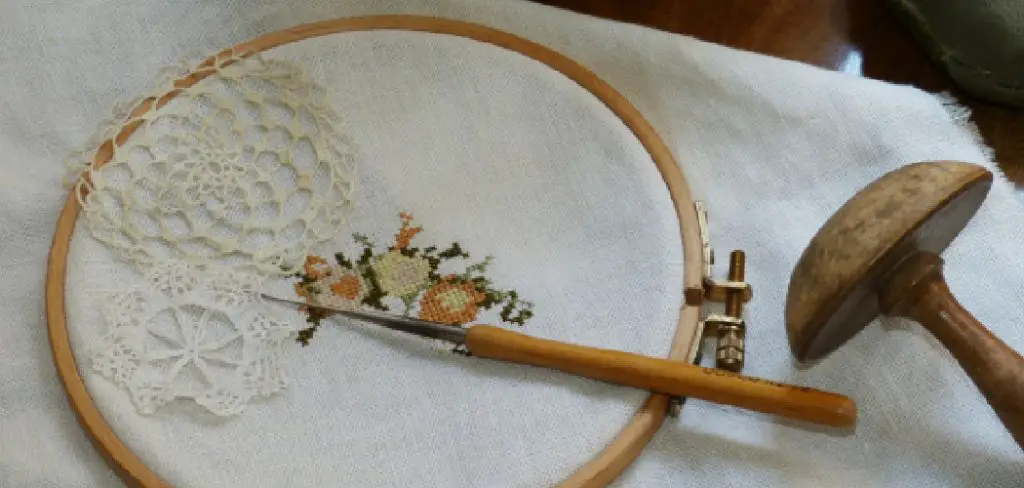
This blog post explores the creative possibilities of sewing with materials other than fabric. We’ll discuss alternative methods for creating stitches without a needle and can make sure even those who lack fancy tools have access to crafty and decorative ways of bringing their ideas to life. So if you’re ready to discover new techniques for customizing your work, read on to learn more about how to sew without a needle!
What Will You Need?
Depending on the type of project you’re working on, you may only need a few simple materials:
- Fabric scissors
- Glue or tape
- Buttons, beads or other decorations
- Ribbon (or similar material to thread through)
- Safety pins or paperclips (for larger items)
- Heat-sealable fabrics
- Fusible web or iron-on adhesive strips
Now that you know what materials you’ll need, let’s dive into some of the techniques and tips on sewing without a needle.
10 Easy Steps on How to Sew Without a Needle
Step 1. Fusing:
Fusing requires a heat-sealable fabric and a source of heat. Be sure to follow all safety precautions when using these items! Fusing is done by applying the hot surface directly onto the backside of the fabric to “melt” together two pieces of material. This technique can be used for adding decorative touches, patching tears, or making tailored clothing.
Step 2. Glue Basting:
Using glue or tape, apply a thin, even layer of adhesive to one side of the fabric that you want to join together. Join the two pieces with a light press and hold until they are firmly stuck together. This technique works best for lightweight fabrics and can be used in place of traditional pinning.
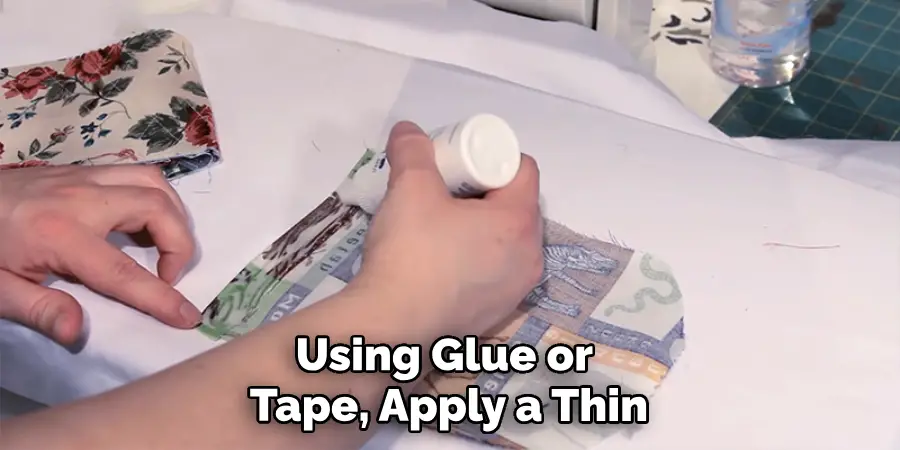
Step 3. Button-stitch:
Using buttons as a decorative element is a great way to add texture and sophistication without having to break out the needle and thread! To create a button-stitch, simply arrange your desired buttons on one side of the fabric, then sew around them using glue or tape. This technique can be used to attach buttons and create patterns or designs.
Step 4. Ribbon-weaving:
Ribbon weaving is a great way to create intricate patterns without having to use a needle and thread. To start, take one end of the ribbon and weave it in and out of the fabric until you reach the desired length. Secure the ribbon with glue or tape and repeat the process until you have created the desired pattern.
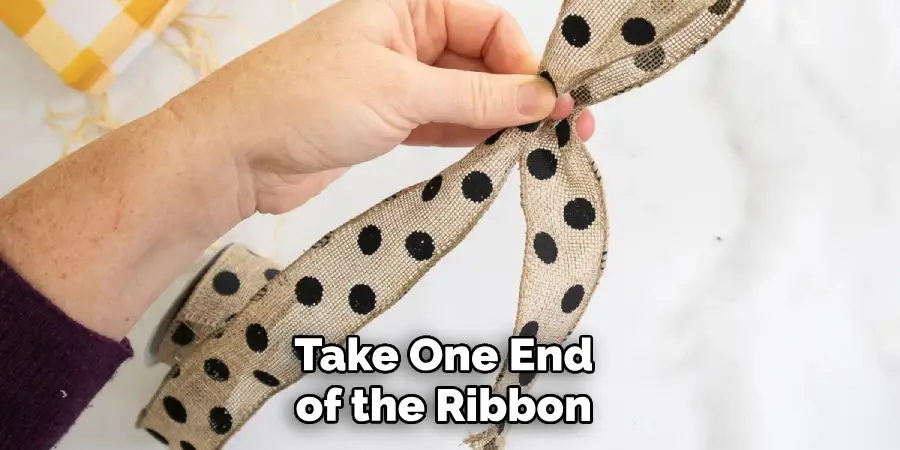
Step 5. Beading:
Using beads is an excellent way to add a unique touch to your sewing projects without having to use a needle and thread! Secure one end of a beading thread onto the fabric using glue or tape. Then, thread the beads onto the beading thread and secure the other end of the beading thread with more glue or tape.
Step 6. Paperclip Chain-stitching:
Using paper clips is a great way to attach two different pieces of fabric without using a needle and thread. To start, secure one paperclip to one side of the fabric. Then, begin threading successive paper clips through each one until you have reached the desired length. Secure the last paperclip with glue or tape.
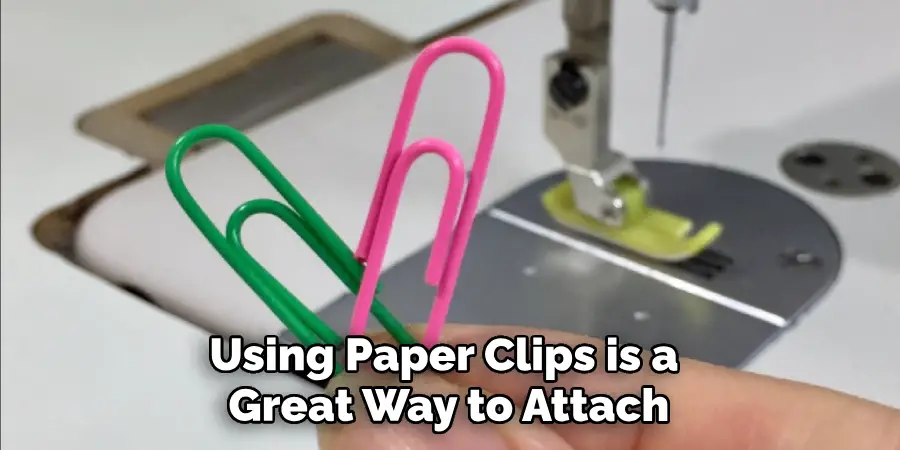
Step 7. Fusible Web Appliqué:
Fusible web appliqué is a popular way to add decorative elements to your sewing projects without having to use a needle and thread. A fusible web is a sheet of adhesive material that can be applied to fabric with an iron. Simply position the fusible web between two pieces of fabric, cover it with a pressing cloth, and press with an iron until bonded together.
Step 8. Iron-on Adhesive Strips:
Iron-on adhesive strips are an easy way to quickly join two pieces of fabric together without having to use a needle and thread. Simply position the iron-on adhesive strip between the two pieces of fabric, press with an iron until bonded together, and trim away any extra material. Try using strips of different colors for a unique and colorful effect!
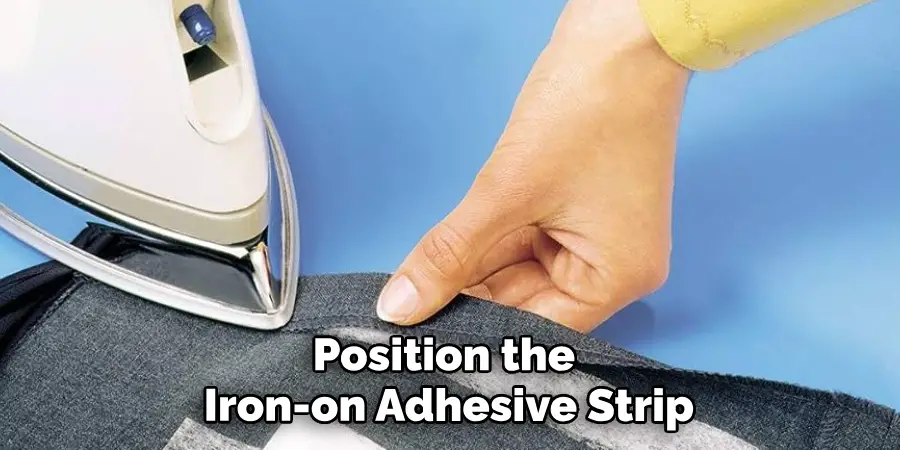
Step 9. Safety Pin Embellishment:
Safety pins are a great way to add an extra bit of flair to your sewing projects without having to use a needle or thread. Simply arrange the safety pins in whatever pattern you’d like, attach them with glue or tape, and you’re done! Remember that safety pins can be a bit sharp, so use caution when handling them.
Step 10. Hook and Loop Tape:
Hook and loop tape is often used as an alternative to sewing for attaching two pieces of fabric. Simply cut the hook and loop tape into small strips, attach one side to one piece of fabric, and then attach the other side to the second piece of fabric. This technique is great for items you may want to use multiple times, such as costumes or blankets.
Following these ten steps, you can add a personal touch to your sewing projects without resorting to needles and thread. Now that you know sew without a needle, the possibilities are endless!
5 Additional Tips and Tricks
- If you want to make a straight stitch without a needle, try using safety pins. They are easy to use and can be found in most craft stores.
- You can also use binder clips as an alternative to needles. Binder clips are strong enough to hold the fabric together tightly and make for great makeshift needles!
- Consider using double-sided tape or fabric glue to secure seams in small projects. Not only are these alternatives easy to find, but they can also give a project a neat and finished look without the hassle of stitching.
- Try using yarn or embroidery floss instead of thread when making hand-sewn crafts such as pillows or stuffed animals. These fibers have more strength and can be used to make a durable seam.
- Finally, if you are looking for an easy way to hem fabric without needles or thread, try using fusible interfacing. This material is heat-activated and will bond two pieces of fabric together when ironed on the correct setting. It’s a great alternative for quick hems!
With these tips and tricks, anyone can learn to sew without a needle. Whether you are making clothing or crafts, these alternatives will come in handy when a needle is unavailable!

6 Things You Should Avoid
- Avoid using regular thread when hand sewing; this thread is not strong enough to hold seams together and can easily break.
- Don’t use staples instead of needles; these are not secure enough and can cause the fabric to fray over time.
- Never substitute duct tape for a needle; while it may seem like a good idea initially, the tape is too harsh and could damage delicate fabrics.
- Avoid using glue or hot glue for hand sewing projects; these adhesives are not strong enough to make a durable seam and can cause the fabric to curl over time.
- Do not use paper clips instead of needles; while they may be handy for temporary stitches, they are not secure enough to make a lasting seam.
- Only try to sew with needle substitutes; this can be dangerous as it can easily cause injury if your hand slips.
By avoiding these common mistakes, you can ensure your sewing projects are successful and safe! With a little bit of practice, anyone can learn how to sew without a needle.
5 Different Sewing Projects You Can Try Without Needle
- Fabric Flower Brooch: Get creative by making a fabric flower brooch. Cut out fabric circles, stack them together, and secure them in the middle with a button or a bead. Attach a brooch pin to the back using fabric glue.
- No-Sew Tote Bag: Create a stylish no-sew tote bag by cutting two square pieces of durable fabric. Use iron-on adhesive strips to secure the sides and bottom, leaving the top open. Add fabric handles secured with fabric glue or more adhesive strips.
- Pillow Covers: Design new pillow covers for your living room. Cut two pieces of fabric to the size of your pillow, plus an extra inch for seams. Use fusible web appliqué to attach the sides and bottom, leaving one side open for the pillow insert.
- Ribbon Bookmark: A simple and practical project is a ribbon bookmark. Choose a ribbon of suitable length, and secure a charm or a bead at one end using fabric glue.
- Handmade Fabric Coaster: A set of fabric coasters can be a lovely addition to your coffee table. Cut squares of fabric and use hook and loop tape or iron-on adhesive strips to bind the edges. For extra absorbency, you can add a layer of felt in between.
These are just a few of the many sewing projects you can make without having to use needles and thread. With some creativity and imagination, you can craft beautiful items that will be cherished for years to come!
Happy Sewing! 🙂

Can You Use a Bobby Pin as a Sewing Needle?
While it might not be the most traditional method, a bobby pin can be used as a makeshift sewing needle. The looped end of the bobby pin can serve as the eye of the needle where you thread your string or thread through. The pointed end can then be used to pierce through the fabric.
Do make sure to exercise caution to avoid injury as the bobby pin is not as sharp as a traditional sewing needle, and it can be slightly more challenging to push through thick fabric. It’s also important to note that this should be a temporary solution and not a permanent replacement for a sewing needle.
With these tips, you can learn to sew without a needle and create great projects that last for years! With a little creativity and some careful application, there are plenty of alternatives available when it comes to hand sewing.
How Do You Make a Homemade Sewing Needle?
If you need a needle but don’t have one, it is possible to make a homemade sewing needle with just a few supplies. All you will need is an old wire coat hanger and some pliers. Start by using the pliers to cut off the top part of the hanger that forms the hook shape. Then take the middle section of the hanger and bend it into a straight line.
Next, use the pliers to make a small loop at one end of the wire to form an eye for the thread. Use your fingers or a pair of tweezers to make sure that the loop is secure enough to hold onto your thread. Finally, use the pliers to sharpen one end of the needle. Once your homemade needle is complete, you’re ready to start sewing!
Making a homemade sewing needle can be a great alternative when you can’t access real needles. Just remember to use caution and wear protective gloves while sharpening the wire! With this simple DIY method, there’s no need to go without a needle ever again.
Conclusion
The creative use of materials and steps helps make sewing a reality without using needles. Now that you know these strategies, you can find new possibilities for creating fabric objects and garments that can be used for many different purposes.
With this newfound knowledge, let your imagination run wild and explore new designs and functions. You may discover a more inventive way to sew without needles or design something unique.
Hopefully, the article on how to sew without a needle has been helpful! Remember that creativity and some clever thinking are essential when making projects without needles. Feel free to experiment and explore different materials to get the desired result.
No matter what happens, these needle-free sewing techniques are essential for any craftsperson who enjoys the joys of fabric manipulation. So have some fun, be creative, and don’t forget—there’s always another way to crafting!


